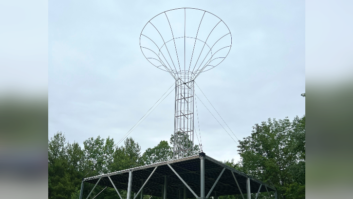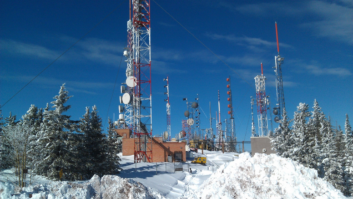In the pages of Radio I�ve written many times about the importance of having a second (and even a third) transmitter. Usually, the context for this is ways and means to buy a new transmitter.
However, we all know simply buying a new one is not always possible.
A retired transmitter provides a wealth of parts for the restoration of another of the same make and model.
CREDIT: Larry Wood
Several times, early in my career, I found myself in this situation: I took on a new station (or client) and found that they had one working (main) transmitter, and another that was not functional, for some unspecified reason. The previous engineer either thought the transmitter was beyond repair, or in some cases, just didn�t have the time or inclination to make it work.

If you work as a contractor, you likely have mixed feelings about this: If the client doesn�t want to pay to have you rehabilitate said transmitter, then they can �pay the freight� when the station is off-air due to a (one and only one) transmitter failure. That�s understandable; it�s a business decision on the owner�s part.
If you work as a regular employee for a station with a similar situation, you should evaluate this transmitter to determine whether or not it is worth the space it takes up. Let�s consider how to do that.
AGE AND AVAILABILITY OF PARTS
You shouldn�t look at the repair of an old transmitter as a loving restoration, like a ham radio project or the restoration of a car. The point of the exercise is to have a working transmitter that you can trust. If the unit is so old that parts are simply not available, then it�s pointless to consider repair.
In some cases, there are parts around for older transmitters � many times, the site may have a box filled with spares, or you might find them hidden on a shelf, behind other, newer stuff. If you are lucky, the station has another version of the same model transmitter � one that was taken out of service when the new main was put in place. Your predecessor may have planned to carry out a restoration eventually.
The electro-mechanical parts like pushbutton switches and door interlocks are items that age poorly; the former wears out, and the latter get very dirty over decades of use. If you have no access to front-panel pushbuttons, I would be wary of proceeding. Old relays can have pitted contacts. You can consider substitutions � just be sure that whatever you put in place of older parts are adequate in terms of the voltage they can withstand and the amount of current they can pass.
Other items that can be difficult to replace are parts associated with the doors on RF enclosures, such as RF gaskets or finger stock. They tend to lose their spring tension over time; they get burned; or they simply break off. With VHF high-gain amplifiers, you will need to have replacements available.
�Older� transmitters usually rely on vacuum tubes as their amplifiers. Always check to see if new or rebuilt tubes are available for the transmitter before you get started. Don�t count on older tubes that you find sitting around, unless you can get them evaluated (at minimum) or rebuilt before deciding whether or not to proceed.
Make sure you have access to the technical manual of the transmitter under consideration. This has been made much easier by the Internet, of course. Many older manuals have been put online as PDF files and are easy enough to find and print.
Another important item is the factory test data for the actual transmitter you are considering; that�s the best way to know, at the end of the project, if the unit is functioning correctly. Twenty or 30 years after the transmitter was delivered, those documents can be very hard to find. The manual will usually have �typical� readings that will suffice.
Next month we�ll take a look at the restoration of high-voltage power supplies, as part of a transmitter rehabilitation project.







